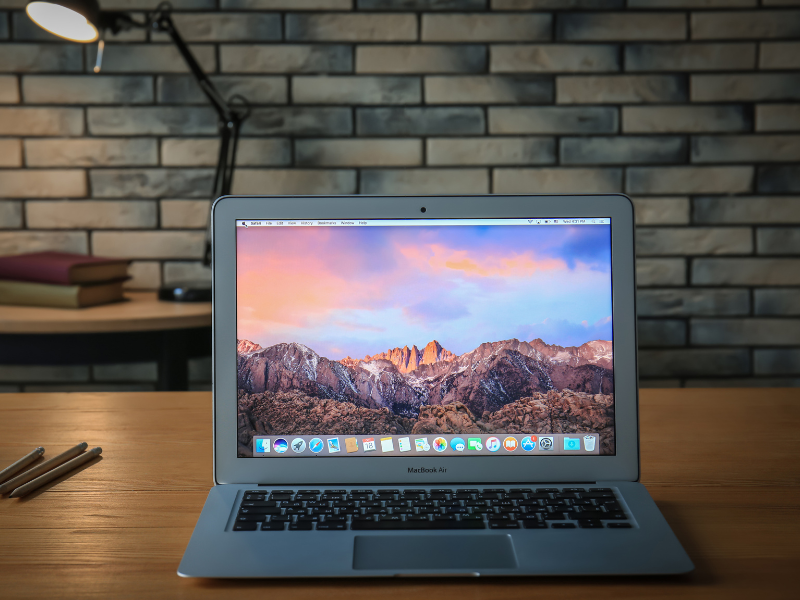
Introduction
Upgrading the software on your MacBook is a crucial step in ensuring that your device operates at its full potential. With regular software updates, you not only gain access to new features and improvements but also enhance the security and stability of your Mac.
In this article, we will delve into the world of MacBook software upgrades. We’ll discuss the importance of staying updated, outline the steps involved in performing a software upgrade, and provide insights based on both personal experience and credible sources to help you make informed decisions. Let’s dive in!
MacBook Software Upgrade: Unleashing the Power of Your Mac

The software on your MacBook is the backbone of its functionality. A software upgrade can breathe new life into your Mac by introducing enhancements to its performance, usability, and security. Let’s explore the key benefits of upgrading your MacBook software.
1. Improved Performance and Speed
Upgrading your MacBook software allows you to leverage the latest optimizations and bug fixes, resulting in improved performance and speed. With each software release, Apple fine-tunes the operating system to provide a smoother and more responsive user experience.
2. Access to New Features
Software upgrades often introduce exciting new features that enhance productivity and efficiency. From advanced multitasking capabilities to innovative apps and tools, upgrading your MacBook software ensures you don’t miss out on the latest offerings from Apple.
3. Enhanced Security and Stability
Protecting your data and ensuring the stability of your Mac is paramount. Apple’s software updates include important security patches and bug fixes, helping safeguard your device against potential vulnerabilities. By staying updated, you reduce the risk of falling victim to cyber threats and ensure a stable and reliable system.
4. Compatibility with New Applications and Hardware
As software and hardware advancements continue, developers optimize their applications and peripherals to work seamlessly with the latest MacBook software. By upgrading your software, you ensure compatibility with a wide range of applications and hardware, ensuring a hassle-free experience.
5. Extended Device Lifespan
By upgrading your MacBook software, you can extend the lifespan of your device. As new versions of macOS are released, older software versions gradually become outdated and may no longer receive critical updates. Staying updated ensures that your MacBook remains compatible with future software releases, maximizing its longevity.
MacBook Software Upgrade: How to Keep Your Device Up-to-Date

Now that we understand the importance of upgrading your MacBook software, let’s explore the step-by-step process to keep your device up-to-date.
1. Check for Software Updates
To begin, navigate to the Apple menu and select “App Store.” Click on the “Updates” tab to check for available software updates. This screen will display a list of all available updates, including macOS updates and updates for any installed applications.
2. Install macOS Updates
If a macOS update is available, click on the “Update” button next to the software update. Before proceeding, ensure you have a stable internet connection and a sufficient battery charge. macOS updates can be large in size, and it’s recommended to perform the update while your MacBook is connected to a power source.
3. Restart Your Mac
Once the software update is downloaded and installed, your MacBook will prompt you to restart the device. Save any necessary work and click on “Restart” to complete the software upgrade process.
4. Stay Informed About Future Updates
Upgrading your MacBook software is not a one-time process. Apple regularly releases new updates to address security vulnerabilities and introduce improvements. Stay informed about future updates by enabling automatic software updates in your MacBook’s System Preferences. This ensures that your device stays current without requiring manual intervention.
FAQs About MacBook Software Upgrade
Can I upgrade the software on my older MacBook models?
Yes, as long as your MacBook meets the system requirements for the latest software update, you can upgrade it. However, older models may not support all the new features introduced in recent macOS updates. It’s recommended to check Apple’s official documentation or consult the technical specifications of your MacBook model to ensure compatibility.
Will a software upgrade erase my data?
No, a software upgrade should not erase your data. However, it’s always a best practice to back up your important files and documents before performing any major software updates. In rare cases, unforeseen issues may occur during the upgrade process, and having a backup helps protect your data.
Can I revert to an earlier macOS version after upgrading?
While it’s technically possible to revert to an earlier macOS version, it can be a complex process that may result in data loss. It’s generally not recommended to downgrade your MacBook software unless you have a specific need and are experienced in performing system restores. Always proceed with caution and consider seeking professional assistance if necessary.
What should I do if I encounter issues during a software upgrade?
If you encounter any issues during a software upgrade, the first step is to restart your MacBook and attempt the upgrade again. If the problem persists, check Apple’s support website for troubleshooting guides related to your specific issue. If all else fails, reach out to Apple Support for expert assistance.
Conclusion
Upgrading the software on your MacBook is a vital aspect of maintaining its performance, security, and usability. By diligently performing software upgrades, you unlock new features, improve performance, and enjoy a reliable and secure computing experience.
In this article, we explored the benefits of upgrading your MacBook software, the steps involved in the upgrade process, and provided answers to frequently asked questions. Remember to always stay informed about the latest software releases and keep your MacBook up-to-date to unlock the full potential of your device.
Upgrade your MacBook software today and embark on a journey of enhanced productivity, seamless usability, and uninterrupted enjoyment of your Mac experience. Happy computing!